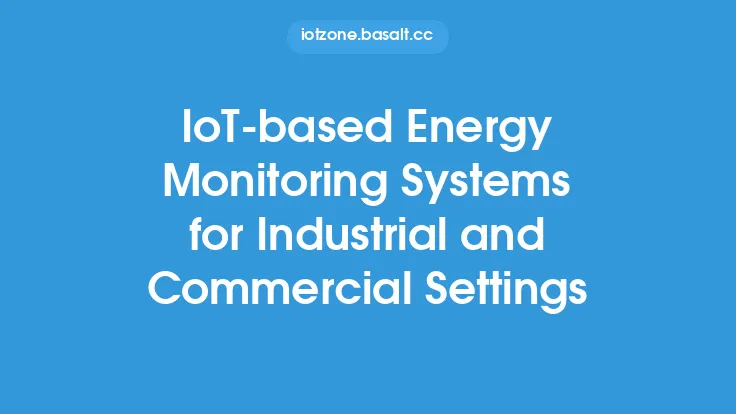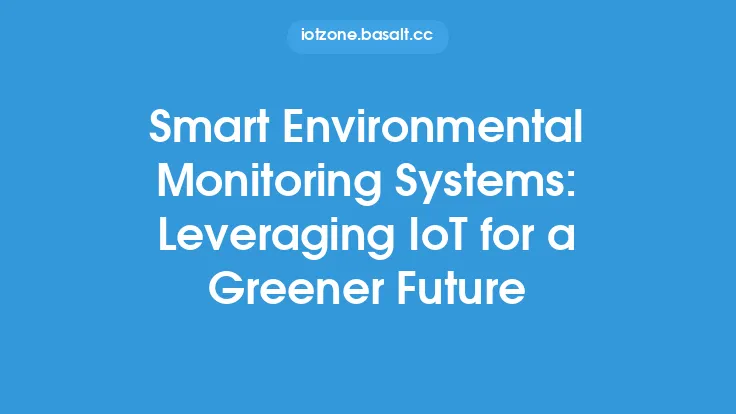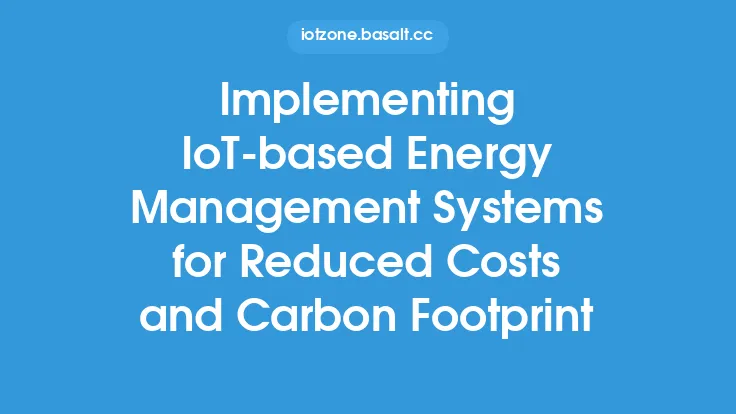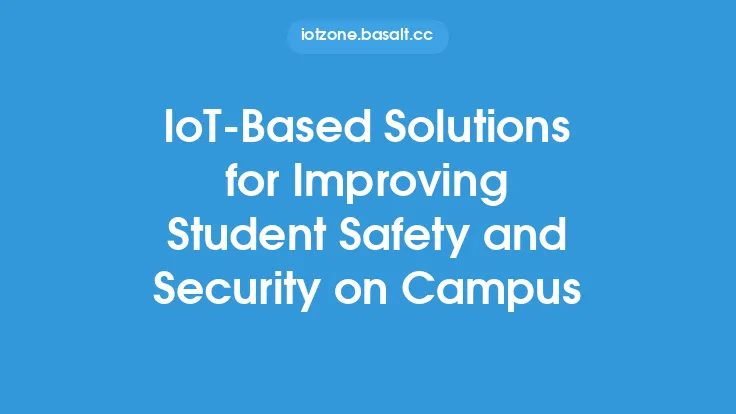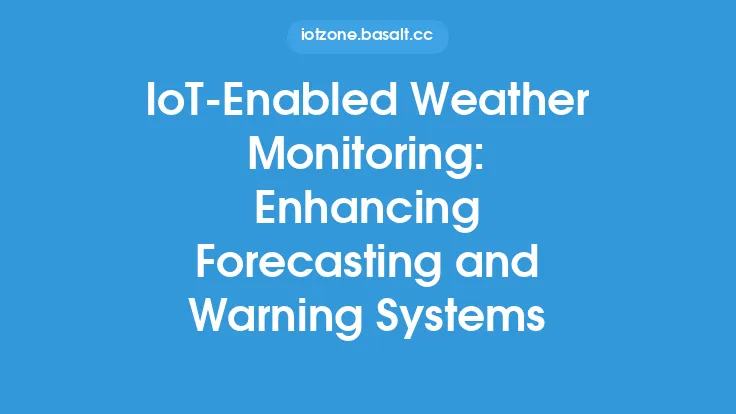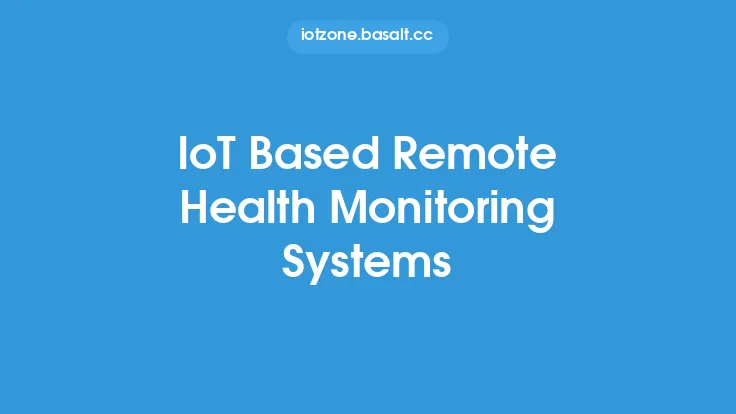The increasing concern about environmental pollution has led to a growing interest in monitoring and mitigating its effects. One often-overlooked aspect of pollution is noise pollution, which can have significant impacts on both human health and the environment. The Internet of Things (IoT) has emerged as a powerful tool for monitoring and managing noise pollution, offering a range of benefits and opportunities for improvement. In this article, we will explore the concept of IoT-based systems for noise pollution monitoring, their components, and their applications.
Introduction to Noise Pollution
Noise pollution, also known as sound pollution, is the excessive or unwanted sound that can harm human health, wildlife, and the environment. It is a growing concern in urban areas, where the increasing density of population, traffic, and industrial activities generate high levels of noise. Prolonged exposure to noise pollution can lead to a range of health problems, including hearing loss, sleep disturbance, and cardiovascular disease. Moreover, noise pollution can also have negative impacts on wildlife, disrupting communication, behavior, and even leading to the decline of certain species.
Components of IoT-Based Noise Pollution Monitoring Systems
IoT-based noise pollution monitoring systems typically consist of several components, including:
- Noise Sensors: These are the devices responsible for measuring the sound levels in a given area. They can be installed in fixed locations or mounted on mobile devices, such as vehicles or drones. Noise sensors can be categorized into two main types: sound level meters and noise dosimeters. Sound level meters measure the sound pressure level (SPL) in decibels (dB), while noise dosimeters measure the cumulative noise exposure over a period.
- Data Loggers: These devices store the data collected by the noise sensors, allowing for further analysis and processing. Data loggers can be equipped with wireless communication protocols, such as Wi-Fi, Bluetooth, or cellular networks, to transmit the data to a central server or cloud platform.
- Communication Infrastructure: This refers to the network of devices and protocols that enable the transmission of data from the noise sensors and data loggers to a central server or cloud platform. The communication infrastructure can include wireless sensor networks (WSNs), cellular networks, or other types of IoT networks.
- Data Analytics Platform: This is the software component responsible for processing, analyzing, and visualizing the data collected by the noise sensors. The data analytics platform can provide insights into noise pollution patterns, trends, and hotspots, enabling informed decision-making and targeted interventions.
Applications of IoT-Based Noise Pollution Monitoring Systems
IoT-based noise pollution monitoring systems have a wide range of applications, including:
- Urban Planning: By monitoring noise pollution levels in different areas of a city, urban planners can identify noise hotspots and develop strategies to mitigate them. This can involve modifying urban design, implementing noise-reducing measures, or relocating noise-generating activities.
- Environmental Monitoring: IoT-based noise pollution monitoring systems can be used to monitor the impact of noise pollution on wildlife and ecosystems. This can help conservation efforts and inform policy decisions related to environmental protection.
- Industrial Monitoring: Noise pollution monitoring systems can be used to monitor noise levels in industrial settings, such as factories, construction sites, or mining operations. This can help employers ensure compliance with occupational health and safety regulations and reduce the risk of noise-induced hearing loss among workers.
- Transportation Noise Monitoring: IoT-based noise pollution monitoring systems can be used to monitor noise levels generated by transportation sources, such as airports, highways, or railways. This can help transportation authorities develop strategies to reduce noise pollution and improve the quality of life for nearby communities.
Technical Considerations
When designing and implementing IoT-based noise pollution monitoring systems, several technical considerations must be taken into account, including:
- Sensor Calibration: Noise sensors must be calibrated to ensure accuracy and reliability. This can involve comparing the sensor readings with reference measurements or using calibration certificates.
- Data Quality: The quality of the data collected by the noise sensors is critical for accurate analysis and decision-making. Data quality can be affected by factors such as sensor placement, environmental conditions, and communication infrastructure.
- Security: IoT-based noise pollution monitoring systems must be designed with security in mind, as they can be vulnerable to cyber threats and data breaches. This can involve implementing encryption, access controls, and secure communication protocols.
- Power Management: IoT devices are often battery-powered, and power management is critical to ensure continuous operation and minimize maintenance. This can involve using energy-harvesting technologies, such as solar panels or vibration-based power generation.
Future Directions
The future of IoT-based noise pollution monitoring systems is promising, with several emerging trends and technologies expected to shape the field, including:
- Artificial Intelligence (AI) and Machine Learning (ML): AI and ML can be used to analyze noise pollution data, identify patterns, and predict noise levels. This can enable more effective noise pollution mitigation strategies and improve the accuracy of noise modeling.
- Internet of Things (IoT) and Edge Computing: The increasing adoption of IoT and edge computing can enable real-time noise pollution monitoring and analysis, reducing latency and improving decision-making.
- 5G and Low-Power Wide-Area Networks (LPWANs): The deployment of 5G and LPWANs can provide high-speed, low-latency communication infrastructure for IoT-based noise pollution monitoring systems, enabling more widespread adoption and improved performance.
- Citizen Science and Community Engagement: IoT-based noise pollution monitoring systems can be used to engage citizens and communities in noise pollution monitoring and mitigation efforts, promoting awareness and encouraging behavioral change.
Conclusion
IoT-based noise pollution monitoring systems offer a powerful tool for monitoring and managing noise pollution, with a wide range of applications and benefits. By understanding the components, applications, and technical considerations of these systems, we can harness the potential of IoT to reduce noise pollution and improve the quality of life for both humans and wildlife. As the field continues to evolve, emerging trends and technologies are expected to shape the future of noise pollution monitoring, enabling more effective and widespread adoption of IoT-based solutions.
